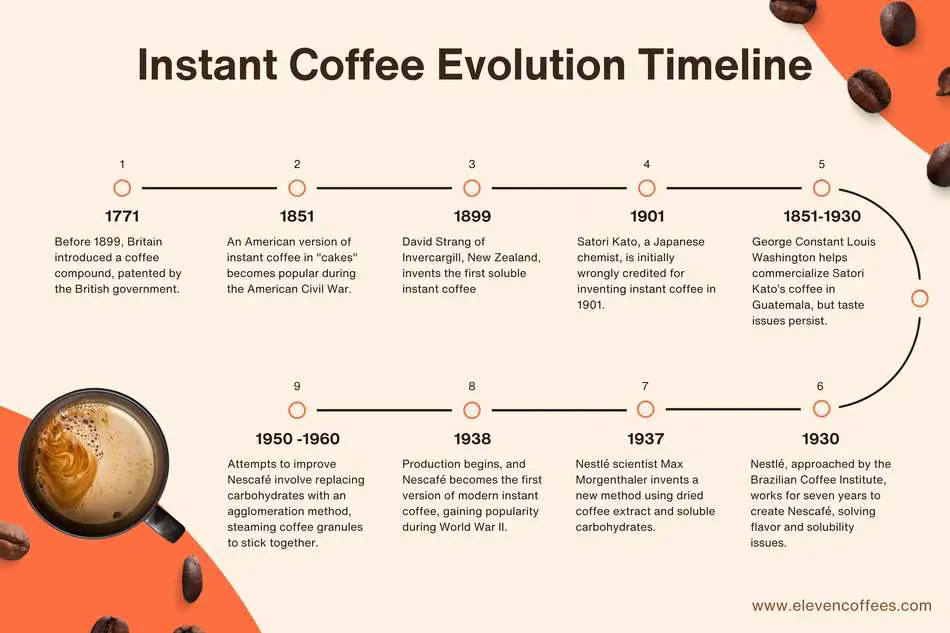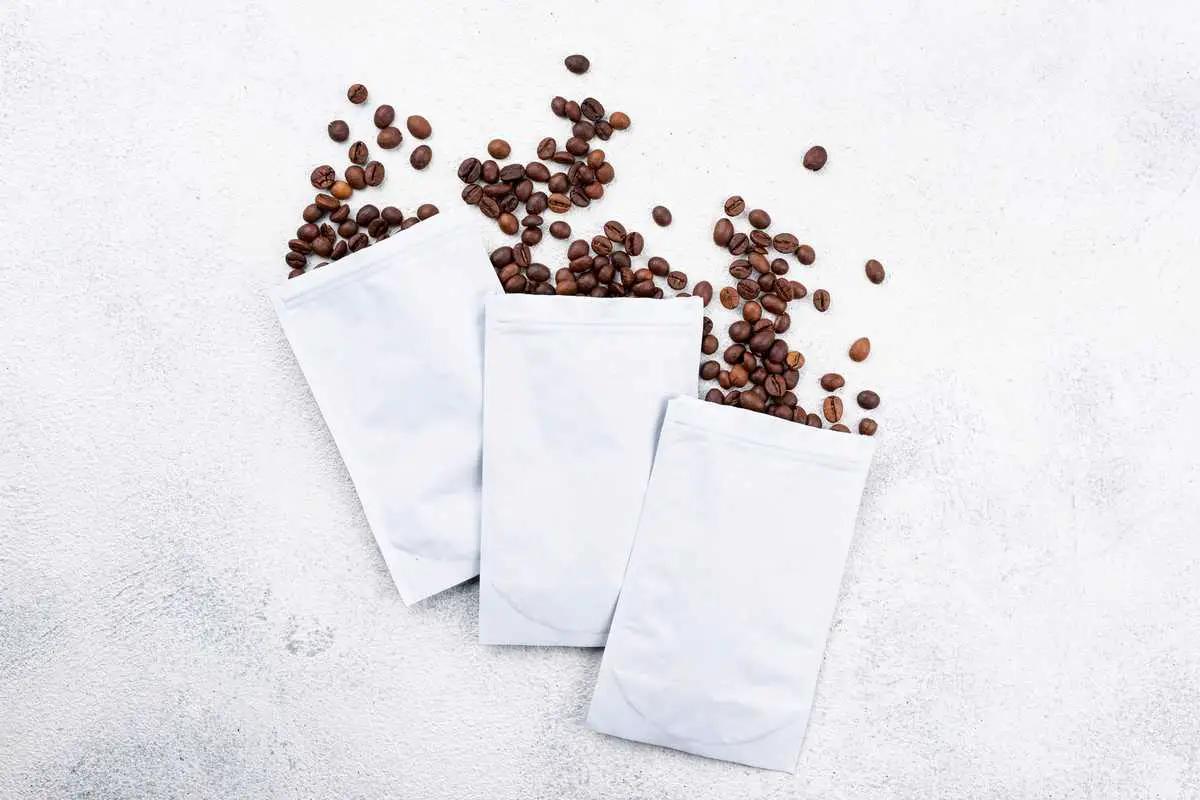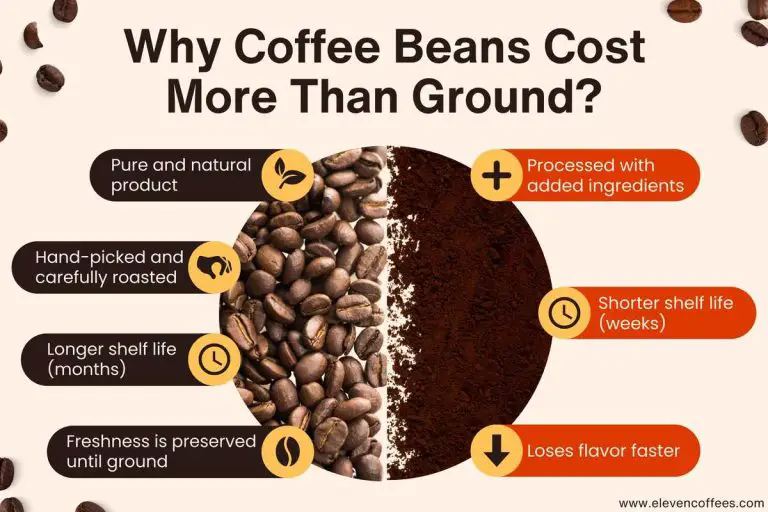How Is Instant Coffee Made? (Amazing 9 Stage Process)
A lot of people insist that instant coffee isn’t real coffee, but I’m afraid to say that it is. Despite what you might think of it, almost 50 percent of the world’s coffee is turned into instant, so I thought I’d let you in on how instant coffee is made.
Instant coffee is made by freeze-drying and spray-drying the concentrated extract of roasted coffee beans. After brewing, the water is removed by evaporation from the extract and frozen to create dry granules or powder. These granules stay in a solid state at room temperature and dissolve when combined with boiling water.
We’re going to take an in-depth look at the Nestlé factory in Derbyshire (UK) to see how their world-famous Necafé Gold instant coffee is produced through freeze-drying. Let’s look at the nine-stage process.
The nine stages of manufacturing instant coffee
Stage one: Delivery
Raw, green coffee beans enter the Nestlé factory by lorry up to four times a day. It takes more than two hours to unload the 27 tonnes of green coffee that are inside each of the four lorries.
The machine then sieves and cleans the coffee to remove any unwanted debris that may have found its way into the batch of beans.

Stage two: Roasting
Next comes the roasting of the beans to turn them from their original green colour to the more familiar brown. For Nescafé Gold, they add a blend of five different beans, weighing 420kg (926lbs) in total, to a giant roaster.
They heat the beans to 230°C (446°F) to produce a medium roast, which the company says is great for drinking both with and without milk. After roasting for 10 minutes, they rapidly cool the beans to 40°C (104°F) to avoid further cooking from the residual heat.
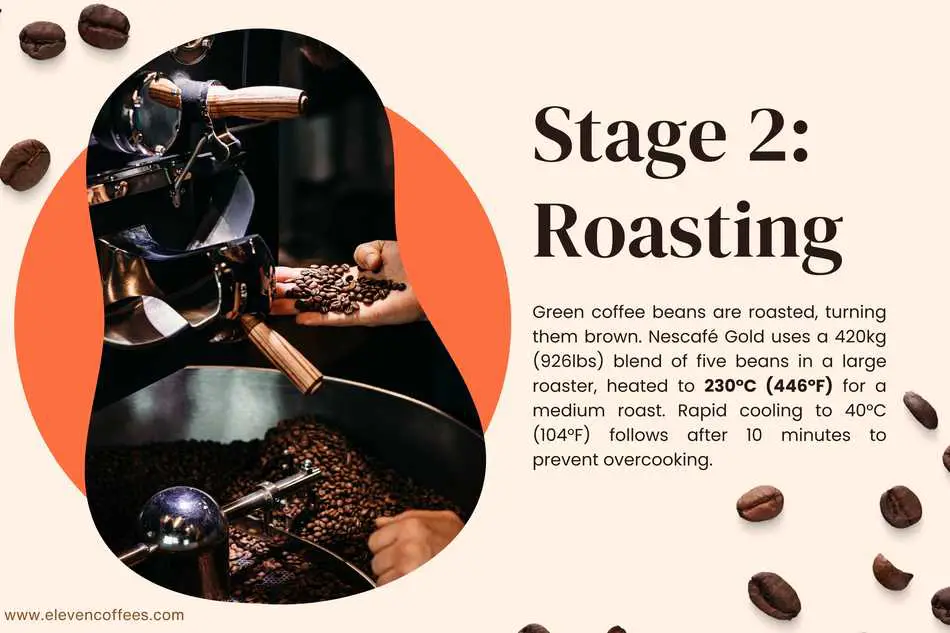
Stage three: Grinding
The roasted coffee beans are now sent to be ground in an industrial roller-mill grinder. This is not the sort of grinder you’ll find on the home kitchen counter. It’s capable of grinding a staggering 1,500kg (3,300lbs) of coffee per hour.
When they grind coffee, a lot of the aromas escape into the air. To minimize the loss, they pump nitrogen gas through the grounds, capturing the aromas as it passes through. The team then stores the vapor in a tank to add later.
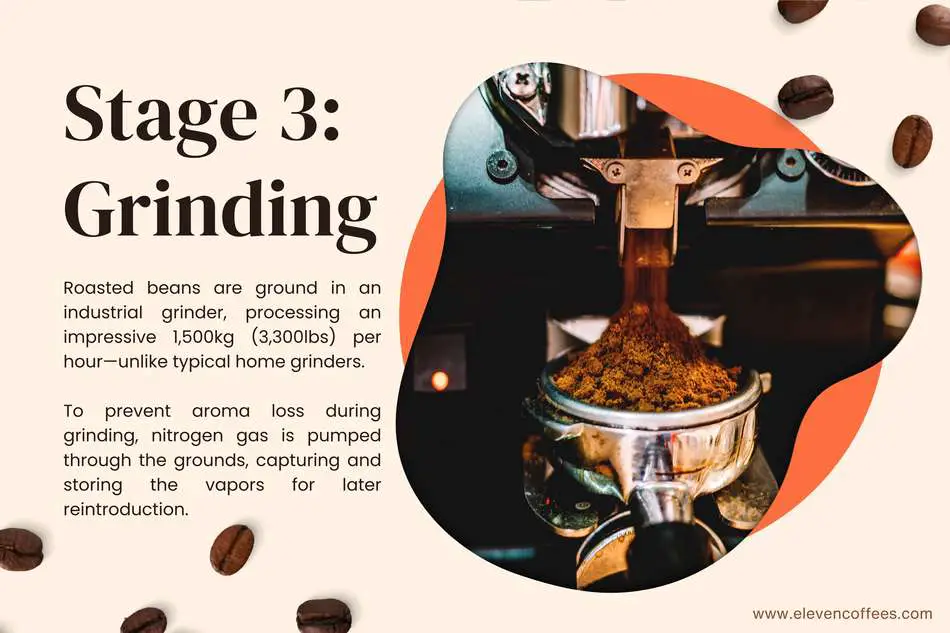
Stage four: Brewing
Now comes the bit you’ll recognize. The team now mixes the ground coffee with water to brew, much like you would do at home using a French press (cafetière).
However, this isn’t just a couple of scoops for your six-cup cafetière.They brew almost 700kg (1,543lbs) of coffee in a giant extraction pod, enough to produce an incredible 250,000 cups of coffee.
Interestingly, the spent coffee grounds are not thrown away at the Nestlé factory. Since coffee grounds produce the same amount of energy as coal, they dry and burn them in the boilers to power the factory.
Something you might want to give a go if you have a log burner at home.
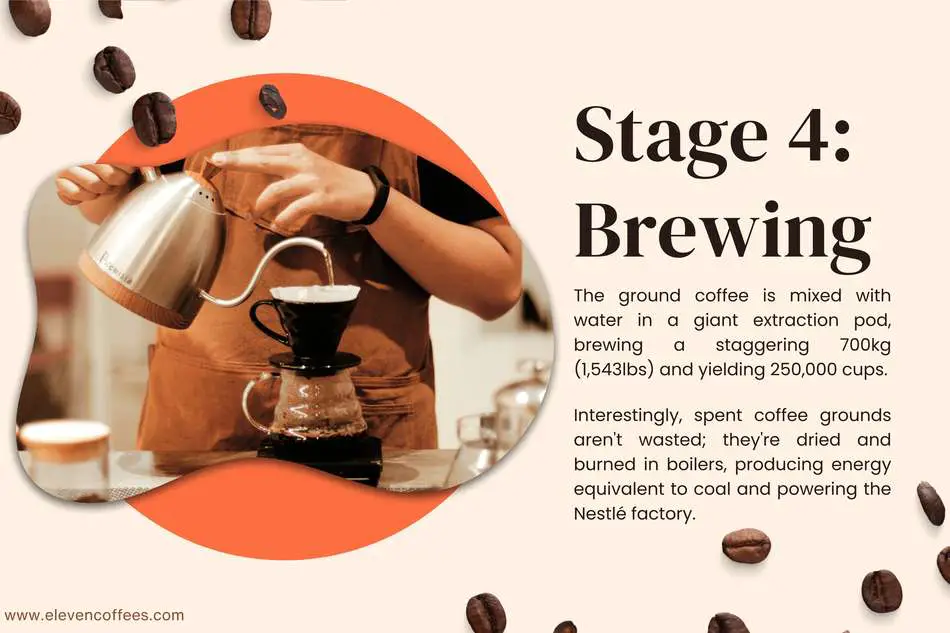
Stage five: Evaporation
Now we begin to see the transformation into instant coffee. The production team sends the brewed and filtered coffee to a giant evaporation tank that spans the entire six floors of the Derbyshire factory. This tank holds around one million cups of coffee, enough to satisfy even the most dedicated coffee drinkers!
Every hour, the workers move 30,000 liters (6,600 gallons) of coffee through pipes inside the evaporator. As the coffee is warmed to 70°C (158°F), the water evaporates and is siphoned off.
The coffee is condensed by 50 percent, resulting in a thick, syrupy coffee extract. This process is similar to reducing a stock at home: as you heat the liquid stock, it reduces and intensifies in flavor.
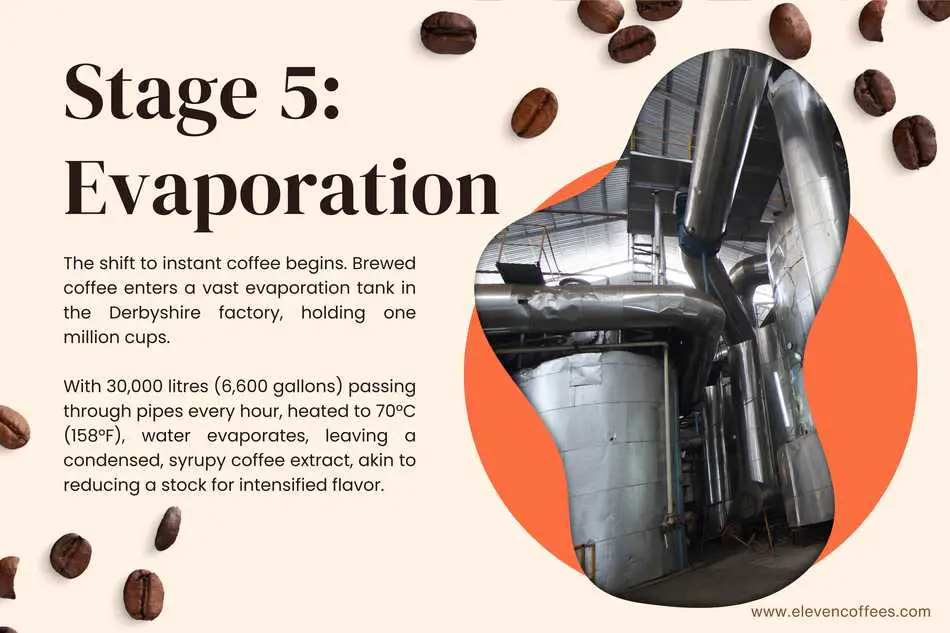
Stage six: Freezing
Nestlé workers pre-chill the coffee extract through heat exchangers to prepare it for freezing. Once chilled, they pour the syrupy extract onto a conveyor belt, which carries it into a giant freezer with temperatures between -40°C and -50°C (-40°F and -58°F). That’s colder than the North Pole.
Afterward, the workers break the coffee into granules. These deep-frozen granules still contain water, which they need to remove.
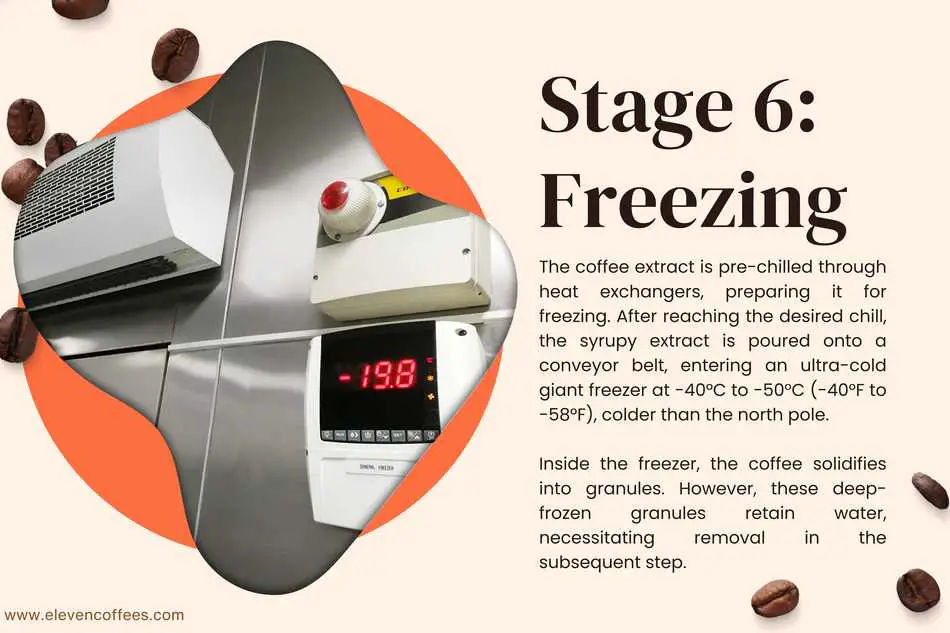
Stage seven: Sublimation
Now we begin to see the transformation into instant coffee. The production team sends the brewed and filtered coffee to a giant evaporation tank that spans the entire six floors of the Derbyshire factory. This tank holds around one million cups of coffee, enough to satisfy even the most dedicated coffee drinkers!
Every hour, workers move 30,000 liters (6,600 gallons) of coffee through pipes inside the evaporator. As they warm the coffee to 70°C (158°F), the water evaporates and they siphon it off.
The team condenses the coffee by 50 percent, resulting in a thick, syrupy coffee extract. This process is similar to reducing a stock at home: as you heat the liquid stock, it reduces and intensifies in flavor.
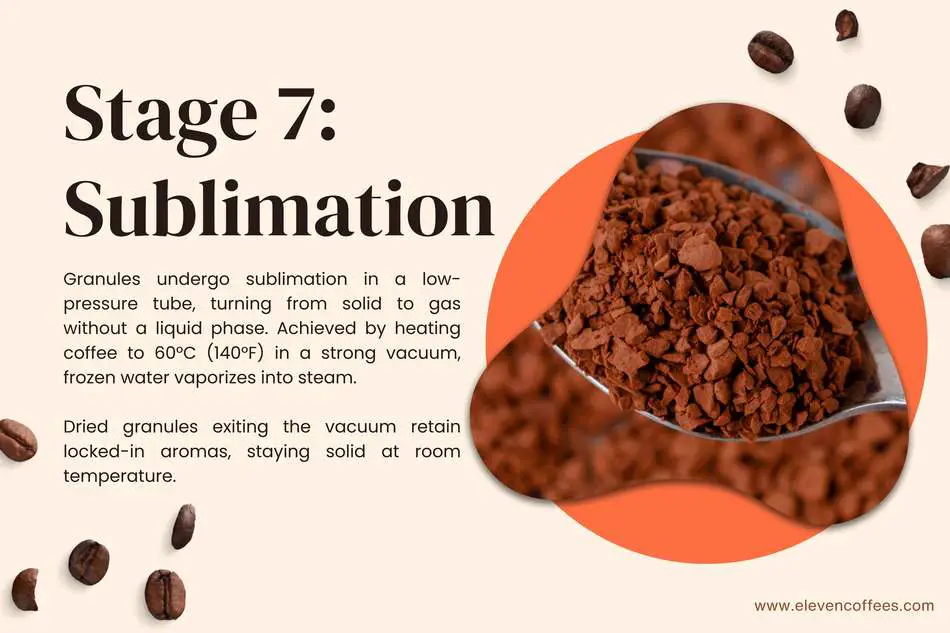
Stage eight: Lost aromas readded
The team now collects the coffee granules and re-adds the aromas captured earlier with nitrogen gas. They spray the aromas over the granules as they pass into giant sacks.

Stage nine: Packaging
The team is now ready to place the freeze-dried coffee into jars. A conveyor belt fills each empty glass jar with coffee in under a second. The workers top each jar with a lid that contains an airtight seal and attach a Nescafé label.
Packaged with cellophane in sixes, the cases are then sent all over the world, even to coffee-producing countries such as Peru.

Spray-drying method
Producers use spray-drying coffee less commonly than freeze-drying, but they sometimes prefer it for its large-scale economic benefits to production.
A pulse combustion spray dryer releases liquid coffee, which hot air measuring 538°C (1000°F) blows at around 400 mph (644 km/h).
The turbulence of the atomization zone inside the dryer is so powerful that it makes for almost instantaneous drying with no scorching due to evaporative cooling.
Despite being a cheaper way of producing instant coffee, the enormous loss of aromas in the spray-drying process results in an inferior tasting product.
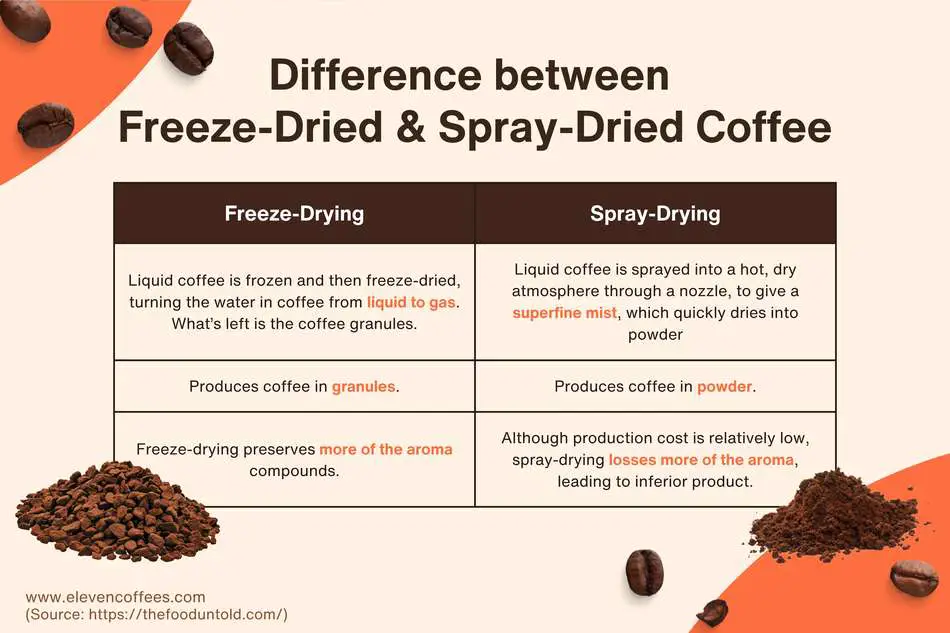
The history of instant coffee
David Strang of Invercargill, New Zealand, invented the first soluble instant coffee in 1899. For many years, people mistakenly credited Japanese chemist Satori Kato with the invention because of his version created in 1901.
Before Strang’s invention, there were several earlier forms of instant coffee, but nothing resembling what we recognize today. The first known instance, called a coffee compound, emerged in Britain in 1771 and even received a patent from the British government.
An American version followed in 1851, and the military used it during the American Civil War. They rationed “cakes” of instant coffee to soldiers, which became extremely popular for boosting morale.
Instant coffee gained further traction when British chemist George Constant Louis Washington helped commercialize Satori Kato’s coffee through his work in Guatemala. However, consumers saw George Washington’s coffee as a novelty, and many found the taste unappealing. Additionally, the coffee did not dissolve well, which contributed to its unpopularity.
Nestlé agreed and spent the next seven years developing an instant coffee that excelled in both flavor and solubility. A breakthrough came in 1937 when Nestlé scientist Max Morgenthaler invented a new method for producing soluble coffee. He combined dried coffee extract with soluble carbohydrates.
Production began the following year, resulting in the first version of the product we now know as Nescafé. This new instant coffee quickly became an instant success, especially among soldiers during World War II.
In the 1950s and 1960s, Nestlé attempted to improve the Nescafé product by eliminating carbohydrates used for stabilization, focusing instead on producing a purer product. They introduced a method called agglomeration, which involved steaming coffee granules to make them clump together. However, this further heating during the brewing process negatively affected the coffee’s flavor, prompting Nestlé to explore other options.
The final breakthrough came with the advent of freeze-drying coffee, a process that maintains quality in instant coffee. Nestlé still employs this technique for their Nescafé products today.
